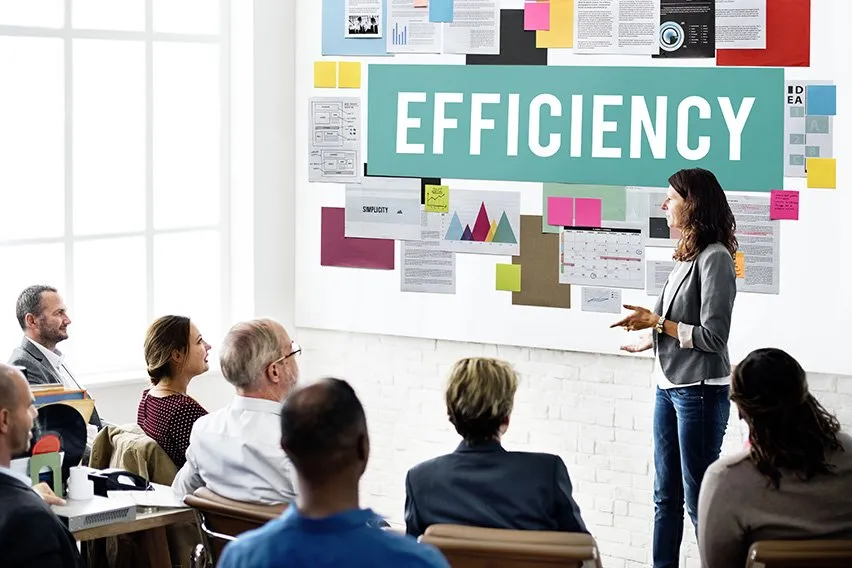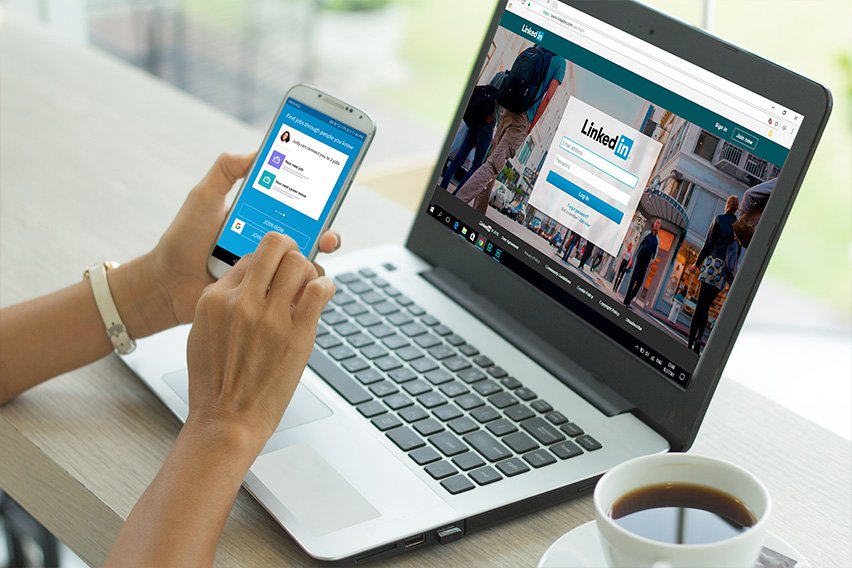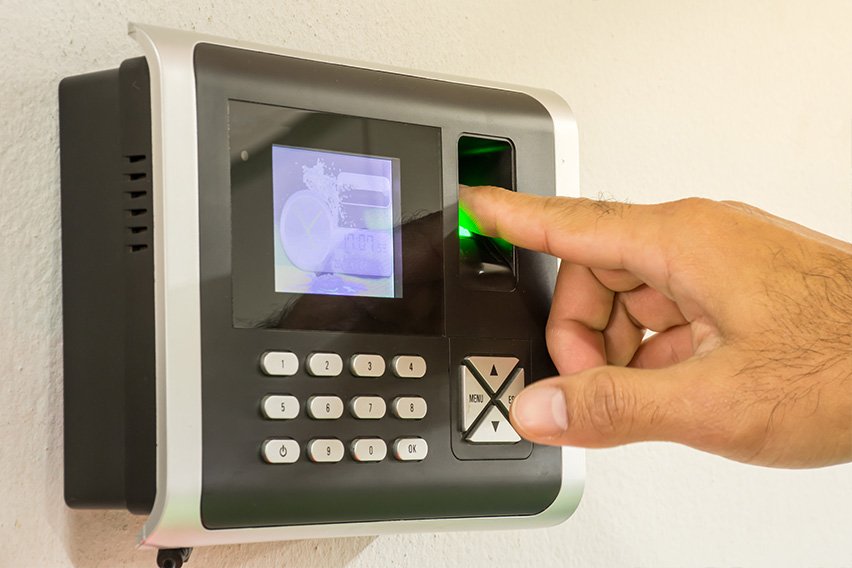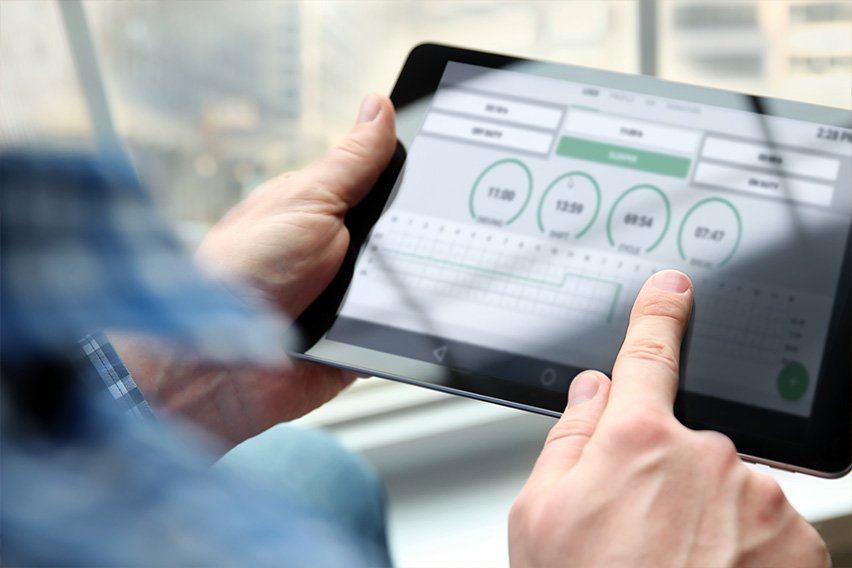15 Hacks for Improving Efficiency in the Workplace

Improving efficiency in the workplace is about your employees working smarter, not harder. Nor is it enough to “crackdown” on employee efficiency.
It’s important to assess all the factors affecting employee efficiency. They could be the work environment, job satisfaction or even effective leadership. Our fifteen hacks below will help you find the right tools and strategies. They’ll help boost employee morale and engagement and increase efficiency at your company.
In this article, we’ll cover:
- Allow Flexible Work Hours
- Update Your Technology
- Map Processes
- Encourage Team Building
- Foster a Happy Work Environment
- Stop with the Meeting Madness
- Find Ways to Automate
- Try A Project Management Tool
- Streamline Your Expense Reporting Processes
- Encourage Healthy Working Habits
- 80-20 Rule
- Discourage Multitasking
- Optimize Your Goals For Success
- Create Incentives
- Track Your Employees’ Time
1. Allow Flexible Work Hours
Flexible work hours don’t limit employees to a set schedule. Instead, they work when they’re the most productive and efficient. Flexibility may mean working late at night for one person and early in the day for another. Allowing employees to choose their hours also makes them happier. They are more likely to stick to work-related tasks when they’re feeling most efficient.
You may consider allowing your team to work remotely, or at least offer more work from home days. Having a remote team improves employee productivity by 13 percent, according to Entrepreneur.
You wouldn’t be alone. Startups and online businesses like Zapier and Groove already have remote teams. Nixing a daily commute offers time back to your employees. It also offers them a more comfortable place to do their work.
Tip: Do you suspect work from home productivity is dipping? Try implementing a time tracking tool like ours.

2. Update Your Technology
Research technology that your team can use to increase work efficiency. What are other businesses in your industry using? Investing in iPads for your employees can help them work on the go, especially if they’re working from home. You can also use an iPad system in the reception area of your business. Tablets can make it easier to receive packages and notify employees of guests.
Tip: Try a virtual whiteboard like Jamboard from Google during your conference calls. Consider giving employees a headphone allowance to let them concentrate.
3. Map Processes
Inefficient workplace processes can make normally efficient workers into frustrated, unproductive ones. Map your processes to see if there’s anything unnecessary that’s slowing down productivity. Change these processes or end them altogether.
Tip: Try mapping a workplace process in a meeting with sticky notes before you commit it to a program like Microsoft Visio. Input revised and new processes into project management software like Asana so your entire team is on board.
4. Encourage Team Building
Workplace productivity increases when employees learn better communication. Identify ways for your employees to spend time working in groups. Schedule time for your team to collaborate with other departments, too. Team building can improve the flow of information within your organization. Team building offers employees to communicate better when working together.
You can also incorporate activities that improve physical and mental health. Healthy employees take fewer sick days and are more productive. Plus, fun team building activities help your employees bond. They have fun getting to know one another outside of work. Team building activities are a fun way to boost employee morale and improve engagement, says ProofHub.
Tip: Organize a charity run, a sports day or a fitness competition. Get employees to volunteer for a charity effort for an entire day. Or sponsor a wellness day with yoga, massages and workshops as well as a healthy lunch and snacks.
5. Foster a Happy Work Environment
Employees who are happy at work are more efficient with their time, do their jobs better and are more productive overall. They also tend to focus on the task at hand instead of getting distracted by non-work tasks, like checking personal social media accounts.
Start by analyzing your office space, recommends ProofHub. How is the lighting? Invest in better lighting to reduce eye strain as well as blinds for windows to let employees adjust how much natural light they want.
Poll employees about their workspaces – are their chairs comfortable enough? Can you install a couple of standing desks? How about casual areas so employees can work on the couch?
Tip: A quick change in office layout can energize employees. Organize an initiative to declutter and move furniture around (ask employees to collaborate first). Buy plants or new art or decorate for a holiday.
6. Stop with the Meeting Madness
U.S. companies spend over $35 billion on meetings every year. Employees spend on average 37 percent of their time in meetings, according to Entrepreneur. Consider if your company has too many meetings. You could be wasting both time and money, not to mention affecting your employees’ happiness.
Having the right project management tools will help eliminate the need for many meetings. Of course, there will always be a need for face-to-face meetings, but maybe not so many of them.
Tip: Slack, Asana and Basecamp are all great project management tools to use. They can improve communication and replace meetings.
7. Find Ways to Automate
Multitasking actually hurts productivity. Rotating between different tasks can cause employees to lose 40 percent of their productivity, says Wrike. Instead, have your team focus on impactful tasks. Here’s where technology can shine and take over small jobs that aren’t as important:
- Try automating your social media campaigns
- Use email marketing services that send automated email campaigns
- Automating your sales and lead-generation work
Tip: Want to improve the level of efficiency in your team? Automate! LinkedIn now has Lead Gen Forms that allow users to submit auto-populated forms. Hootsuite is a tool that will help you automate your social media campaigns.
8. Try A Project Management Tool
There are so many great project management tools on the market for businesses of all sizes. Whether you are a solo entrepreneur or have a small team, there are plenty of flexible options to choose from.
A project management tool can help you:
- Delegate tasks
- Set clear deadlines and goals
- Create personalized to-do lists for each member of the team
- Corroborate notes between different team members
These are all helpful in creating a more efficient work environment.
There is a downside, and it’s the onboarding process. If you aren’t already using project management software, it takes some getting used to. You have to onboard your entire team and show them the ropes. You also have to trust that they’ll actually use it. If your team members use pen and paper to-do lists, introducing software is an adjustment. It’s also not one and done. Onboarding is an ongoing process. Allow time for things to be a little messy at the beginning before they improve.
Tip: Favorite productivity management apps include Trello, Notion, ClickUp and Asana. Most have free trials so that will give you time to experiment before deciding.
9. Streamline Your Expense Reporting Processes
One of the things that slow us down most in the workplace is accounting. You may have bookkeeper or accounting software like ours. But you still have a little bit of work to do to keep on top of workplace finances.
That means making sure that your expense reporting is seamless. Is your petty cash log up to date? Are your business expenses categorized correctly? Are your employees accurately reporting their expenses? Do you have a record of all the receipts?
Tip: If you want less of a headache when it comes to expense reporting, it helps to have software on your side. The FreshBooks system automatically links to your bank account and pulls in all transactions. Then all you need to do is categorize them in the app. You can even set rules for expenses. So if you often have a bill from a certain vendor, you can automatically categorize it. Cuts your job in half!
10. Encourage Healthy Working Habits
Efficiency crumbles when your team feels overworked. It may be great to see people coming into the office early and staying late. But how productive are those extra hours? The bottom line is, healthy employees are efficient employees.
That’s what employee efficiency is all about! Get the most out of your work time. Not necessarily adding more work time.
Studies show that overworked staff are the least efficient of all. People who don’t get enough sleep, exercise and healthy foods are more prone to burnout. They’re also more distracted and confused on the job.
For an efficient workplace, you want your employees to take care of themselves. The best way to do this is to lead by example.
- Have healthy snacks available in the office
- Encourage employees to use the Pomodoro technique to make sure they take regular breaks.
- Use time tracking to see how much your employees are working. If they are working more than their contracted hours, something is going wrong. Either the employee isn’t being as efficient as they could be or the job needs redesigning.
Tip: Apps like IncentFit make wellness part of your company’s philosophy and benefits package. You can reward employees for hitting their health goals and completing challenges.

11. 80-20 Rule
The 80-20 Rule is also known as the Pareto principle. The idea is that 20% of the effort creates 80% of the results.
To make your workplace more efficient, it’s good to know what that 80% is.
Drill down to the actions in your business that truly make the most tangible difference.
- Do you need to have a weak presence on all social media platforms? Or can you focus on excelling on two that are most relevant to your industry? Some apps are a waste of time if they don’t bring results.
- Are there too many employees working on one project? Could the differing opinions slow progress down?
- Can you reduce the range of clients you work with and niche down?
Tip: It helps to brainstorm as a team to get a better sense of what’s working and what’s not.
12. Discourage Multitasking
Multitasking is a killer. We all feel like we’re being more productive when we have an email tab open, Slack and Excel. But nothing could be further from the truth.
Plenty of studies show that true productivity comes from focusing on one task at a time. You can’t truly engage with your work if you’re distracted by pinging emails and Slack conversations.
Tip: You can use apps like RescueTime to block certain websites when you’re working on a project. Just isolate the websites you actually need to get the task done. Encourage employees to do the same and see your employee efficiency go through the roof!
13. Optimise Your Goals For Success
Everyone has a different style when it comes to goals. Some can fly by the seat of their pants with vague direction. Others need clear, actionable steps to achieve the broader goal.
You may have both types in your team. Everyone benefits from knowing what the ultimate objectives are for any project or task.
Be clear about purpose. Why are you taking the steps you are taking to make the goal happen? What is the reasoning behind your approach? It really helps boost efficiency if folks understand exactly what they’re doing and why they’re doing it.
Tip: By using one of the project management tools we mentioned, you can create goals and task lists that everyone understands. Bonus if you add to the notes of the goal why it’s important. Purpose is a huge driver of productivity and growth.
14. Create Incentives
Extra vacation days. Bonuses. Company-wide emails and in-person congratulations.
These are all good ways to improve team performance. People like to feel that they are doing a good job. Maybe you can’t appeal to every love language but most employees will know what motivates them.
Does it have an employee of the month scheme?
Maybe winning a prize or bonus will help?
For some employees, having a clear progression structure helps them to feel they are moving forward in their career with you?
Whatever you choose, make sure your reward schemes are generous and feasible for your business. For example, if you can’t pay huge salary bonuses, don’t advertise that. Stay within your business capabilities to create rewards that work for you.
Tip: Having an awesome benefits package helps keep employees motivated. You can use apps like BenefitFocus to help you manage it.
15. Track Your Employees’ Time
We’ve mentioned time tracking a few times in this article in relation to other tips. That’s because time tracking is quite the granddaddy when it comes to workplace efficiency.
Maximizing your time is the crux of efficiency after all. Diligent time tracking for yourself and everyone in the team has a ton of benefits:
- You can see if your business is inefficient in the first place! We’ve written this article assuming that you want to improve efficiency. Of course, there’s always room for improvement. But things may not be as bad as you think! Time tracking is one way of actually seeing the reality of your working processes.
- It encourages more focused work. The most impactful tasks get prioritized. By virtue of tracking hours, people just tend to be more switched on. They scroll social media less and keep water cooler talk to a minimum when they know they’re on the clock.
- You can identify if any employees are overworking or underworking. You can also spot inefficiencies in your own working process when you track time diligently.
Tip: The FreshBooks time tracker comes standard on all of our plans. It’s an intuitive, super easy-to-use time app that syncs with all employees. Employees can clock in and clock out using their desktop or phone. So it’s perfect for remote work or out-of-office workers. Create time track reports at a click of a button and start reviewing your business’ efficiency straight away!
RELATED ARTICLES

 7 Proven and Budget-Friendly Ideas to Improve Your Small Business
7 Proven and Budget-Friendly Ideas to Improve Your Small Business Best Receipt Scanning Apps (2025)
Best Receipt Scanning Apps (2025) 8 Best Apps for Entrepreneurs (2025 Edition)
8 Best Apps for Entrepreneurs (2025 Edition) How to Keep Track of Employee’s Hours?
How to Keep Track of Employee’s Hours? What Is a Time Log? Time Tracking Basics
What Is a Time Log? Time Tracking Basics